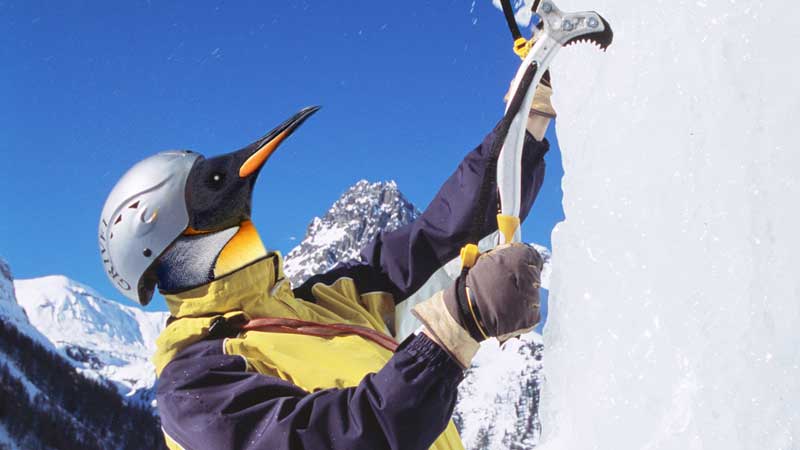A new study shows that in recent years, some emperor penguin colonies swiftly adapted to a lack of Antarctic sea ice by moving their breeding grounds—to the tops of nearly 100-foot ice cliffs.
A group of researchers set out to determine why two colonies of emperor penguins are sometimes found on sea ice and other times are atop large ice shelves. Analyzing impressively vivid satellite images and aerial surveys, they saw that, in years when sea ice formed according to a normal pattern, the birds set up breeding grounds on the ice. When the ice was late, as it was in 2011 and 2012, the colonies appeared atop ice shelves, which are large chunks of glacial ice that have broken off the mainland.
Exactly how they got up there is still a mystery, but scientists do know that the Antarctic Peninsula, where these colonies live, is one of the fastest-warming parts of the continent and has lost a significant amount of sea ice over the past 50 years. This behavior seems to indicate that the penguins are quickly adapting to their changing environment.
Climbing up the sides of a floating ice shelf—which at this site can be up to 30 meters (100 feet) high—is a very difficult maneuver for emperor penguins.
“These charismatic birds tend to breed on the sea ice because it gives them relatively easy access to waters where they hunt for food,” says Peter Fretwell of the British Antarctic Society and lead author of the study, which was . “What’s particularly surprising is that climbing up the sides of a floating ice shelf—which at this site can be up to 30 meters (100 feet) high—is a very difficult maneuver for emperor penguins. Whilst they are very agile swimmers they have often been thought of as clumsy out of the water.”
Researchers from Scripps Institution of Oceanography and an Australian research group coauthored the study.
The researchers do not yet know how moving the colonies will impact the birds, or whether it could soften the blow of late sea-ice formation. But, they write, “Current climate models predict that future loss of sea-ice around the Antarctic coastline will negatively impact emperor numbers; recent estimates suggest a halving of the population by 2052.”
While some of the icy cliffs have 100-foot faces, the researchers note that, “Ice creeks often indent the cliff face giving a potential route up onto the ice-shelf itself… King penguins climb up dry glaciers in warm weather to stay cool; perhaps the less-agile emperor is also able to climb slopes, particularly where ice shelves weather and ablate the steepness of the shelf face.”
The environment on the ice shelves is not optimal for breeding, due to high winds, potential calving near the terminal edges, and exposure. Scientists also do not know what physical toll the act of climbing up on the shelves will take on the animals, or how breeding patterns might change. But they think this discovery is an important one. Their report concludes: “This previously unknown and surprising behavior recorded in such an iconic animal suggests that other species may also be capable of unpredicted or unknown behavioral adaptations that may also increase their survival in a future warming world.”


